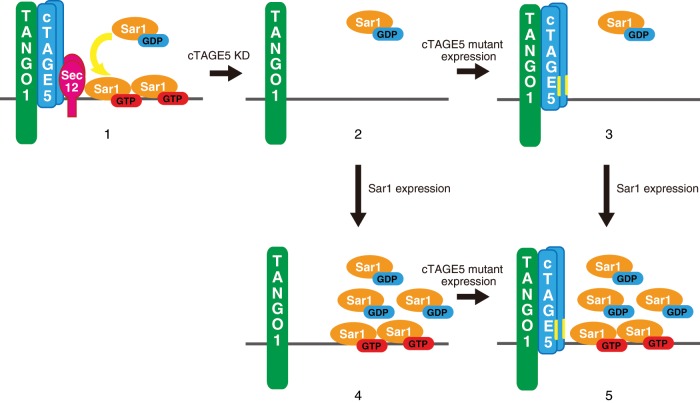FIGURE 4:
Schematic representation of collagen receptor complex under conditions used in this study. In wild-type cells, cTAGE5/TANGO1/Sec12 acts as a cargo receptor for collagen VII and also produces activated Sar1 in the vicinity of ER exit sites (scheme 1). cTAGE5 knockdown renders cargo receptor incompetent and leads to Sec12 dispersion, which inhibits the production of activated Sar1 around ER exit sites. Therefore collagen VII secretion is impaired (scheme 2). The expression of cTAGE5 mutants in cTAGE5-depleted cells rescues the formation of cargo receptor complex, but production of activated Sar1 remains inefficient. Collagen VII cannot be secreted (scheme 3). The expression of only Sar1 is not efficient for the formation of cargo–receptor complex, thereby inhibiting collagen VII secretion (scheme 4). The coexpression of Sar1 and cTAGE5 mutants rescues the formation of the cargo–receptor complex and the amount of activated Sar1 around ER exit sites. Thus collagen VII secretion can be rescued (scheme 5).

